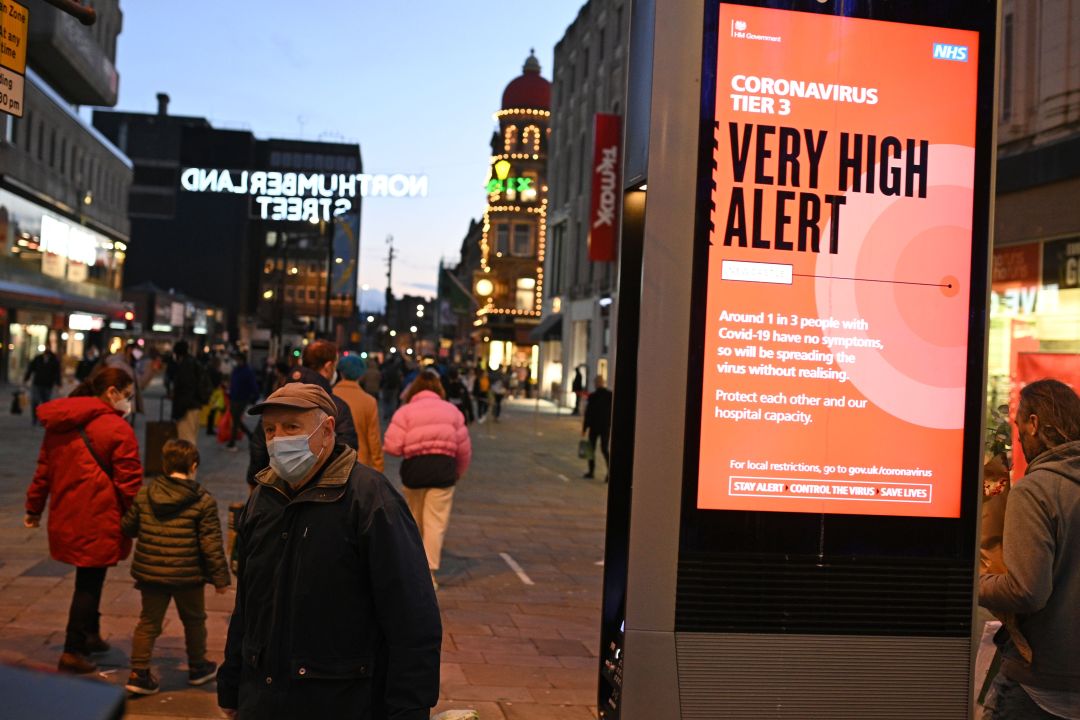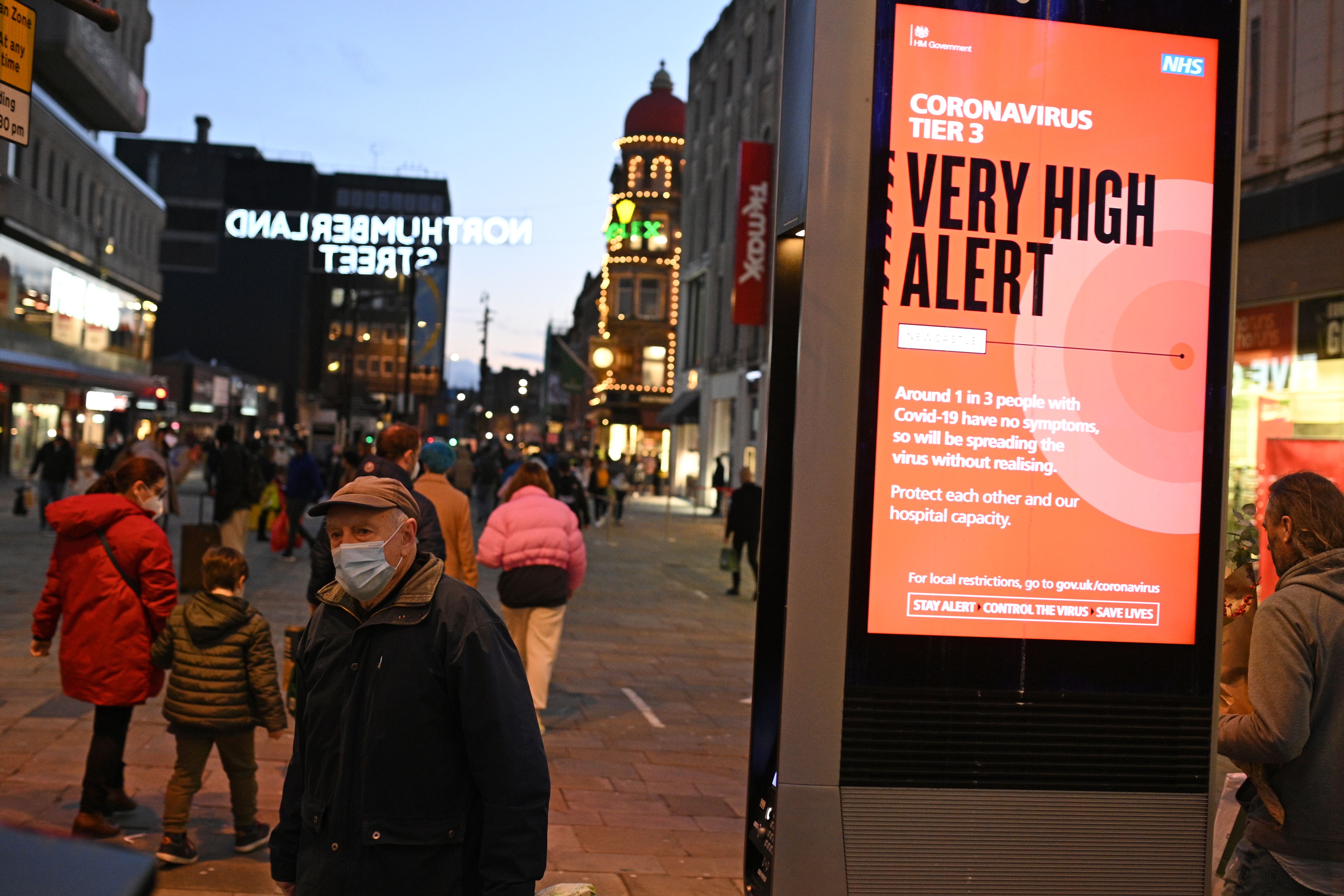What do we know about the new Covid strain? Like all viruses, Sars-CoV-2 changes. Like a manuscript that is being endlessly copied, letter by letter, it accumulates typos – changes in its genetic code. Compared with other viruses, this one changes at quite a slow rate.
But we have seen a new version of the virus’s genetic code – its core manuscript – emerge in London and South East England, and it has some interesting properties.
Firstly, it has accumulated quite a number of changes in the relatively recent past. This points to an interesting history for this strain and also means its biology – and the way it behaves in our bodies – could have changed too.
Secondly, it is growing in the frequency at which we see it in infected people. That could be due to chance – some quirk in restrictions which means it is growing, or it could be that it is displacing other lineages of the virus. It’s something that is very hard to know for sure. This study is called phylodynamics and phylogeography, and this virus is being so intensively studied and tracked that we are seeing ‘recurrent but real’ mutations a fair bit, which makes this analysis more complex. Nevertheless colleagues such as Andrew Rambaut, Nick Goldman and Emma Hodcroft can untangle this. They and other scientists are pretty sure this increase is a property of the virus, not simply that this variant was in the right place and right time.
The other big question is what this variant means for vaccines: will they still be effective?
What don’t we know?
We don’t (yet) know if this change in biology changes other aspects, in particular disease progression. Given the numbers of cases in the South East, and that hospitalisation rates do not seem to have changed massively, there’s unlikely to be a huge difference. But this variant could still be different in a host of ways. Those could include how it transmits – it might affect different age ranges more or less – or it could cause clinical progression of the disease to differ. Researchers will be looking very carefully at this.
The other big question is what this variant means for vaccines: will they still be effective? It’s worth stressing that there are thousands of variants of this virus – we are looking at just one of them. Overall the changes we have seen are still small. The fact that all three successful vaccines are tested in an environment of mixtures of many different strains and they have high efficacy rates is a reassuring place to be; but this deserves more attention.
It’s also worth stressing that although the ‘business end’ of the immune system is producing B-cell antibodies – a sort of guided missile that latches onto viruses, prevents viral action and triggers their destruction by macrophages (Pac-Man-like immune cells) there are also T-cells.
T-cells come in two types. One is a sort of ‘public health of cells’ check. These ones regularly knock on the doors of cells, looking to see if there’s anything unusual about them. If something dodgy is found, the cells are triggered to commit suicide. The other is a ‘command-and-control’ type. These T-cells knock on the door of B-cells and effectively say, ‘please show me what you’ve caught using your antibodies’ using a similar mechanism to the ‘public health’ T-cells. If these cells find anything, rather than triggering the suicide switch they say: ‘permission granted to replicate like crazy and get those b*stards’.
The good thing about T-cell immunity is that it works off fragments of viral proteins, not the whole thing. That means any one mutation can at most impact one fragment and the immune response to it.
When we are looking at immune response, it is easier to measure the B-cell response (the presence of antibodies – those guided missiles) but in fact the T-cell response is just as important and is less sensitive to the precise overall configuration of the virus. (If you are thinking how smart this system sounds, you’re right – the immune system is one of the jewels of mammalian evolution.)
The Covid vaccines we have developed stimulate both B and T-cell immunity, so there’s good reason to think that they will protect us against a variety of Sars-CoV-2 strains, this one included. Of course, that doesn’t mean we shouldn’t check.
But in terms of NPIs – non-pharmaceutical interventions like the tier restrictions and Track and Trace – England will have to up its game, as most other governments likely will too: we need more effective interventions to reduce transmission. The good thing is that we have a surveillance system keeping watch for and tracking new strains across the UK at the detailed ‘letter by letter’ level. Many other European countries do too. With the sheer number of Covid cases worldwide, this is unlikely to be the first time the virus has mutated to be more infectious – it might just be the first time we’ve detected that it has done so.
This article is free to read
To unlock more articles, subscribe to get 3 months of unlimited access for just $5








Comments
Join the debate for just £1 a month
Be part of the conversation with other Spectator readers by getting your first three months for £3.
UNLOCK ACCESS Just £1 a monthAlready a subscriber? Log in